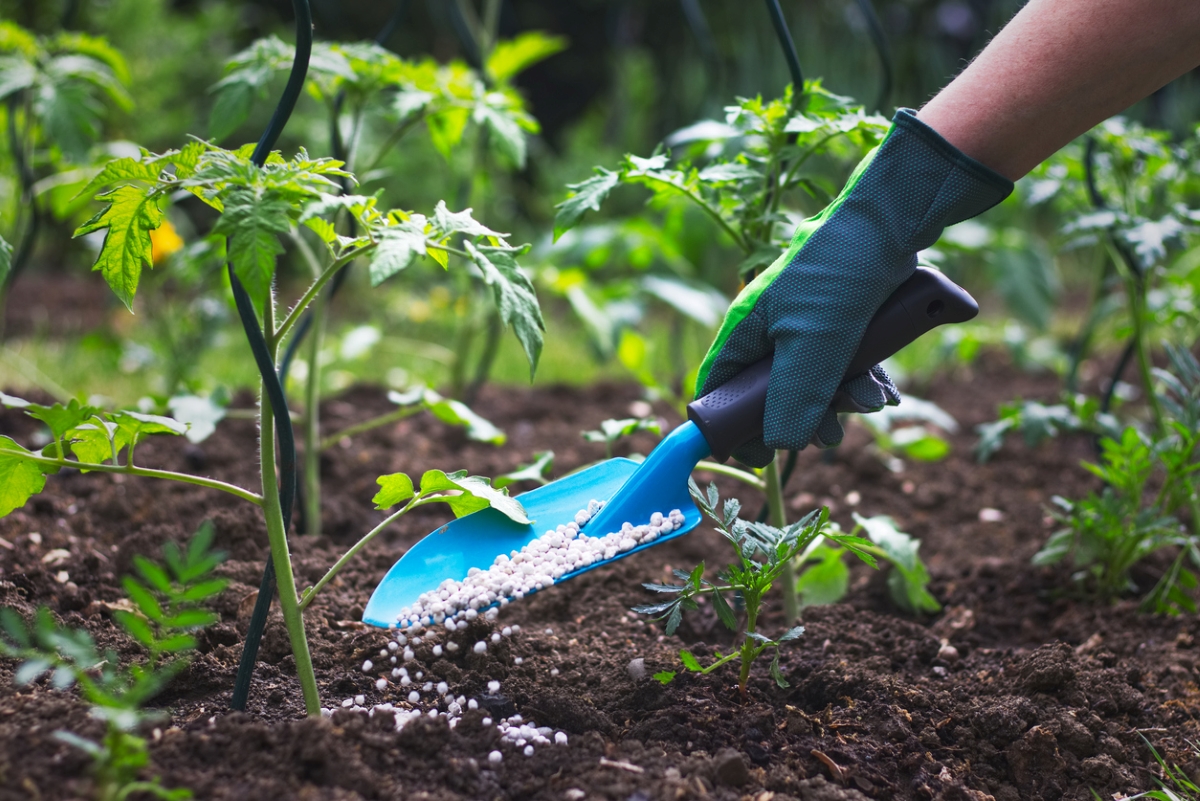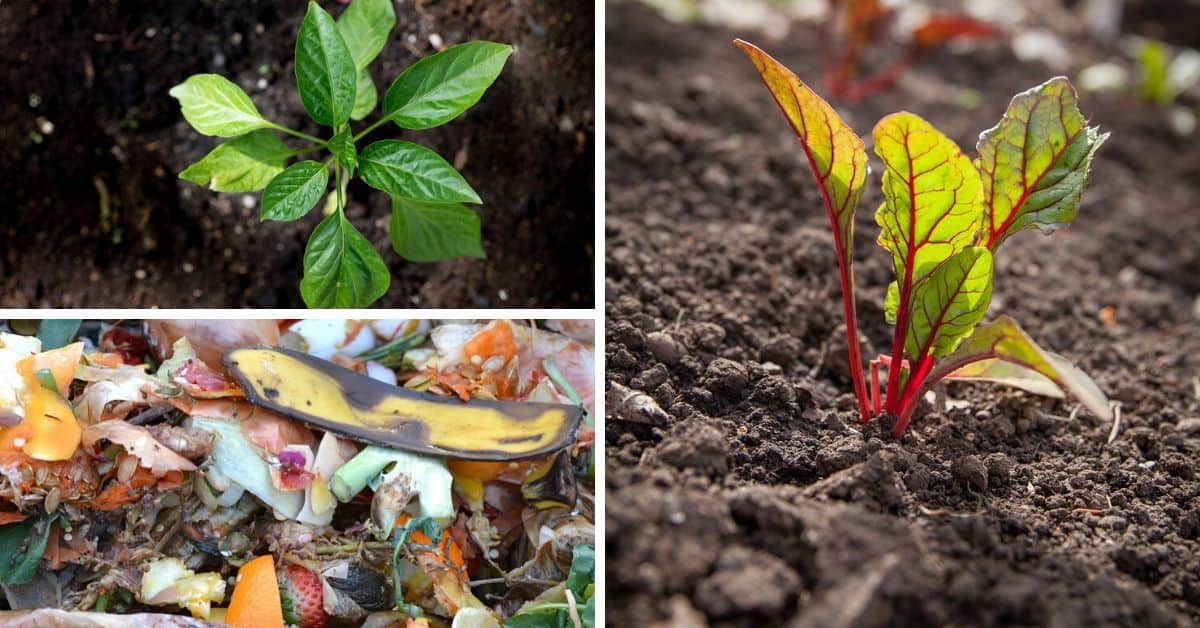Is plant food the same as fertilizer? In short, no. While both contribute to a plant’s overall health and growth, there are differences that set them apart. Unfortunately, the terms often are used interchangeably, which leads to confusion about plant food vs. fertilizer.
First, what is plant food? Plants make it using things like air, water, sunlight, and nutrients in the soil. Fertilizer is also plant food, but it comes from a mix of natural or man-made nutrients that are added to soil or water (or sometimes put on leaves) to help plants grow and stay healthy.
Not only is there a big difference between fertilizer and plant food, but there is also a difference between liquid fertilizer and plant food to clear up. Liquid fertilizer is sometimes labeled as indoor plant food, but only plants can make plant food.
Walk down the garden aisle of any home improvement store and you’ll see bags of products labeled as both “fertilizer” and “plant food” This often leaves gardeners wondering – are fertilizer and plant food really the same thing? Let’s clear up some of the confusion surrounding these common gardening terms,
The Difference Between Fertilizer and Plant Food
While the terms are sometimes used interchangeably, there is a distinction between fertilizer and plant food:
-
Fertilizer is any material added to soil to provide essential nutrients and enhance plant growth, The term refers specifically to the chemical compounds plants need
-
Plant food is a more consumer-friendly term used for marketing fertilizer products to home gardeners. Technically, plants make their own “food” through photosynthesis.
So fertilizer provides chemical nutrients, while plants make their own food internally. But colloquially, plant food and fertilizer basically mean the same thing.
Nutrient Content in Fertilizers and Plant Food
The key consideration when choosing any fertilizer or plant food product is its nutrient content:
-
Nitrogen (N) – promotes leafy growth and green vegetation
-
Phosphorus (P) – aids in flowering, fruiting, and root growth
-
Potassium (K) – strengthens overall plant health and disease resistance
Fertilizers can also contain other secondary nutrients and trace elements needed in smaller amounts. The nutrient ratios are always listed on the fertilizer package as N-P-K percentages.
Main Types of Fertilizer and Plant Food
There are two main forms of fertilizer/plant food available to home gardeners:
Granular Fertilizers
- Dry granules formulas applied to soil
- Provide nutrients through slow, steady release
- Last 8-12 weeks depending on product
- Examples: Miracle-Gro Shake ‘n Feed, Osmocote Smart-Release
Liquid Fertilizers
- Concentrated liquids diluted with water
- Provide fast-acting nutrients directly to leaves
- Effects seen within 1-2 weeks but don’t last as long
- Examples: Miracle-Gro LiquaFeed, Fish Emulsion, Compost Tea
When to Use Fertilizer or Plant Food
Timing is important when fertilizing plants:
-
Apply granular fertilizers at the start of the growing season to feed plants all season.
-
Use liquid fertilizers every 2-4 weeks through the growing season for a nutrient boost.
-
Stop fertilizing 6-8 weeks before the expected first fall frost.
Always follow package directions for correct products, rates, and timing for your specific plants.
Organic vs. Synthetic Fertilizers
You’ll also find both organic and synthetic options for fertilizers and plant foods:
-
Organic formulas derive nutrients from natural sources like compost, animal manures, bone meal, and rock powders. They release nutrients more slowly.
-
Synthetic fertilizers contain chemically formulated nutrients that are more concentrated and rapidly available.
There are benefits to both types – choose what fits your gardening goals and preferences.
The Benefits of Using Fertilizer and Plant Food
When applied properly, fertilizers offer a wide range of benefits:
- Produces more robust growth and higher yields
- Encourages beautiful flowers and lush foliage
- Helps plants resist diseases and environmental stresses
- Extends the harvesting period for fruits and vegetables
- Replenishes nutrients used by previous plants
- Corrects deficiencies from poor soil quality
But beware of over-fertilizing, which can damage plants and contaminate waterways. More is not always better when it comes to fertilizer!
Common Myths About Fertilizer and Plant Foods
There are a few common misconceptions about fertilizers and plant foods:
-
Myth: Fertilizers instantly revive unhealthy plants. Fact: They cannot cure existing problems but do strengthen future growth.
-
Myth: More frequent applications are better. Fact: Overfertilzing hurts plants and the environment.
-
Myth: Organic fertilizers are automatically safer. Fact: Organic or synthetic, always follow label rates.
-
Myth: Fertilizing late in the season increases hardiness. Fact: Late fertilizing promotes tender new growth prone to winter damage.
Tips for Using Fertilizers Effectively
Follow these best practices when using fertilizers or plant foods:
-
Always read and follow label directions for application rates and timing.
-
Apply granular fertilizers near plant roots and water in well after application.
-
Alternate between granular and liquid fertilizer for balanced feeding.
-
Use less fertilizer for seedlings, stressed plants, or containers.
-
Monitor plants and avoid over-fertilizing. Signs include yellowing leaves, weak stems, small foliage.
-
Apply only what plants can use – excessive fertilizer simply washes away.
-
Rake up any granules spilled on hard surfaces so they don’t wash into storm drains.
Feeding Plants With Fertilizer and Plant Food
While technically distinct, fertilizer and plant food essentially refer to the same gardening products in everyday use. Whichever term is used, the goal remains the same – to provide supplemental nutrients through the growing season to help plants thrive. With a basic understanding of the different types and proper usage, fertilizers and plant foods can be powerful tools. Use them correctly to grow your biggest, most beautiful garden ever!
Fertilizer is an additive that you can make or buy.

According to the University of Minnesota Extension, adding nutrients to the soil when you fertilize plants gives them access to the nutrients they need for healthy growth. Gardeners can either make their own fertilizer with common household items like baking soda and Epsom salts, or they can buy one of the many commercial brands that are on the market.
There are different kinds of commercial fertilizers, such as liquid, granules (slow-release types that last all growing season or quick-release types that work right away), and spikes. Fertilizers can be organic or inorganic. It’s important to know your plant’s needs at various stages of its life to make the best selection.
The major nutrients—or macronutrients— a plant needs are nitrogen, phosphorus, and potassium.
- Nitrogen (N) supports foliage growth and promotes germination.
- Phosphorus (P) helps plants grow roots, flowers, and fruits, and it also makes them less likely to get diseases.
- Potassium (K) helps plants stay healthy by making them better at absorbing water and fighting off disease.
These three important macronutrients are mixed in different amounts, which is called the NPK ratio, to help different kinds of plants grow. A balanced fertilizer features equal amounts of all three elements.
A broader list of plant macronutrients includes:
- Calcium (Ca)
- Nitrogen (N)
- Potassium (K)
- Phosphorus (P)
- Hydrogen (H)
- Oxygen (O)
- Sulphur (S)
- Magnesium (Mg)
In addition to macronutrients, plants need small amounts of certain micronutrients for healthy growth. Trace amounts of some micronutrients help fight disease; others help plants resist insects.
For example, zinc helps plants develop roots and undergo photosynthesis. Iron also plays a role in photosynthesis, as well as chlorophyll production. Boron assists in flower development, amino acid production, and sugar transport.
Common micronutrients in fertilizer include:
- Iron (Fe)
- Zinc (Zn)
- Nickel (Ni)
- Copper (Cu)
- Cobalt (Co)
- Chlorine (CI)
- Manganese (Mn)
Plants make their own food—you can’t buy it.
What exactly is plant food? It’s a waste product that plants make when they turn water, carbon dioxide, sunlight, and soil nutrients into food for themselves. Simple sugar is the main ingredient in plant food. It is made when carbon dioxide from the air mixes with chlorophyll to make chloroplasts. When chloroplasts combine with carbon dioxide, they turn into sugar.
Plants make their own food by taking in nutrients from the soil through their roots. During photosynthesis, plants convert sunlight, carbon dioxide, minerals, and water into sugars (glucose) and oxygen. They release that oxygen into the atmosphere and use the sugars as food.
Is Plant Food The Same As Fertilizer?
FAQ
What is the difference between plant food and fertilizer?
Is Miracle-Gro plant food the same as fertilizer?
Can food be used as fertilizer?
Is fertilizer the same as feeding?
Is fertilizer the same as plant food?
by Matt Gibson and Erin Marissa Russell The words fertilizer and plant food are often used interchangeably, but they are not technically the same thing. Gardeners use fertilizers to help enrich their soil, supplying it with the essential nutrients that plants need to grow and bloom correctly.
Are all fertilizers the same?
Fertilizers aim to restore lost nutrients to the soil so plants can continue to make plant food. Not all fertilizers are the same. General-purpose fertilizers provide soils with a broad spectrum of vitamins and minerals to cover all the bases. But some fertilizers only provide specific nutrients.
Is fertilizer a natural process?
Fertilizers are made commercially, and fertilizing is not a natural process. On the other hand, proper plant food making is a natural process. Fertilizers enrich the soil, while plants use the nutrients found in the soil and the environment to create their own food called plant food. Some commercial packages might claim that it is plant food.
Why do plants eat fertilizers?
Fertilizers are made for the sole purpose of revitalizing soil in order to provide plants with nutrients, but it is up to the plants themselves to concoct their own meals. Plants make their food with the nutrients that they absorb from the soil in combination with a special blend of air, water, and sunlight.
- The Ultimate Guide to Growing Strawberries in Raised Beds - August 8, 2025
- No-Dig Garden Beds: The Easiest Way to Grow a Beautiful Garden - August 6, 2025
- How to Protect and Preserve Wood for Raised Garden Beds - August 6, 2025

